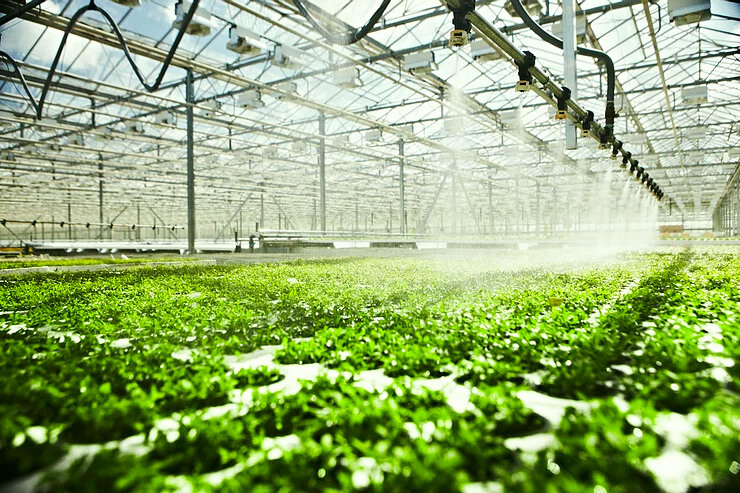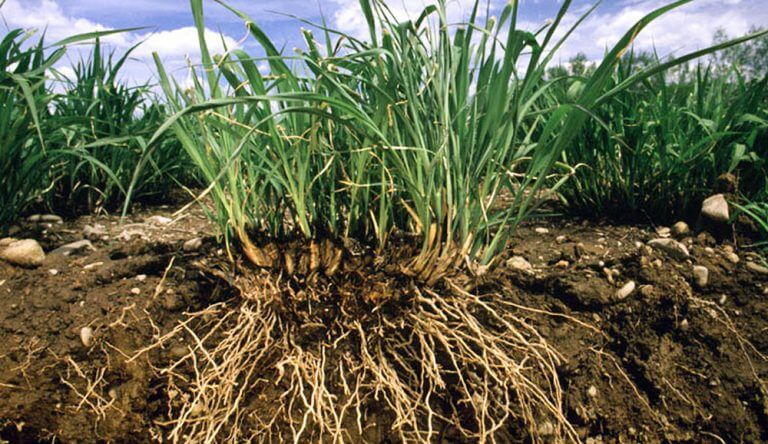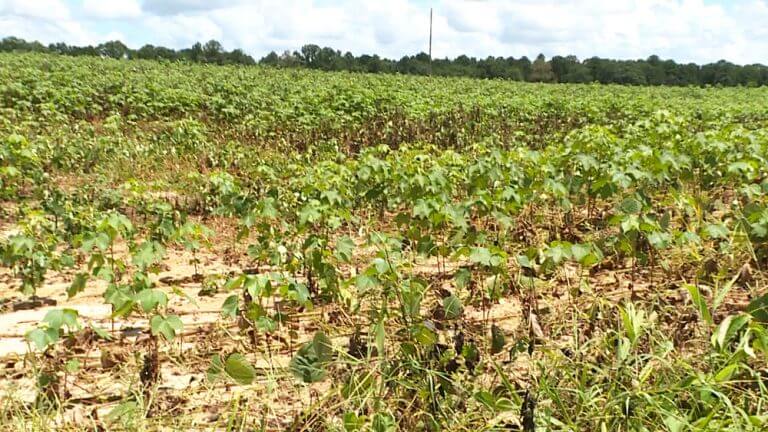NutriAg Contest Official Rules
“NutriAg Boost your Crop Contest” sponsored by “NutriAg” and administered by “NutriAg.” This document constitutes the official rules of the Contest (“The Rules”) and the Rules exclusively govern all aspects of the Contest Entry. Entry of a participant in this Contest constitutes that participant’s irrevocable acceptance of and agreement to be bound by all Rules of the Contest.
Timing of the Contest: The contest begins on Monday, July 6, 2021 at 8:00 am EST and ends on Friday, August 14, 2021 at 5:00 pm EST. NutriAg reserves the right, in its sole discretion, to adjust any of the dates, timeframes and/or other mechanics stipulated in these Rules, to the extent deemed necessary by NutriAg, for purposes of verifying compliance by an Eligible Participant (as defined below) or other information with these Rules, or as a result of any problems, or in light of any other circumstances which, in the opinion of NutriAg, in its sole and absolute discretion, affect the proper administration of the Contest as contemplated in these Rules, or for any other reason.
Eligibility to Enter: Contest is open to legal residents of Canada and the USA who have reached the age of majority in their respective province, territory or state of residence at the time of entry and are recognized by NutriAg as a grower, dealer and/or agronomist. Employees or contractors of NutriAg and immediate family members of, and any persons domiciled with any such employees or contractors, are not eligible to enter.
Any Litigation respecting the conduct or organization of a publicity contest may be submitted to Régie de acools, des course et des jeux for a ruling. Any litigation respecting the awarding of a prize may be submitted to the board only for the purposes of helping the parties reach a settlement.
How to Enter: No purchase of NutriAg products is necessary to enter the Contest. A purchase of NutriAg products will not increase an Eligible Participant’s chances of winning. Chances of winning cannot be determined by NutriAg prior to the end of the contest period and will be dependent on the number of Eligible Participants in the Contest and the number of Entries received.
During the Contest Period, Eligible Participants may enter the contest by:
- Filling out the submission form on either nutriag.com/boostyourcrop, to be eligible to win a grand prize valued at $3000 CDN including NutriAg product.
- Retweeting / Sharing any of the NutriAg tweets / social media content or Following NutriAg on Twitter, Facebook or Linked In (if they don’t already follow NutriAg), throughout the during of the Contest Period will enter you into a draw for NutriAg promotional merchandise.
Twitter, Facebook or Linked In are in no way associated with this giveaway. If applicable, social media posts (such as but not limited to tweets and Facebook posts) must be PUBLIC to be eligible. A reply to the winning email is required within 48 hours before a new winner is chosen. The winner’s entries will be verified. By participating, entrants agree to be bound by these Official Rules and the decision of the Sponsor and Administrator. Void where prohibited by law. NutriAg shall have the right to disqualify any Eligible Participant if NutriAg, at its sole discretion, considers the participants to have or have attempted to have violated the Rules or otherwise acted in a disruptive or abusive manner. Entries that are incomplete, illegible, irregular, inaccurate, misdirected, falsified, altered, tampered with, or lost or delayed shall be void. Any violation or attempted violation of any applicable laws, regulations, guidelines, industry standards and/or community standards shall result in immediate disqualification from the Contest.
Prize: Subject to these rules.
- The Grand Prize consists of an assortment of products and NutriAg products worth $3000 Canadian dollars, to be claimed before August 31, 2021.
- There is one (1) such Grand Prize to be won during this contest and
- One (1) eligible participant will be awarded the Grand Prize during this contest.
- NutriAg reserves the right to substitute products with like value alternatives.
- Up to one Hundred (100) additional prizes worth $25 Canadian dollars each, will be drawn from participants who either Follow NutriAg (if the participant does not already follow NutriAg) or share NutriAg content on Twitter, Facebook or Linked In during the Contest Period
Both the Grand Prize and the Additional Prizes must be accepted as awarded and cannot be substituted, sold, transferred assigned or redeemed for cash. Notwithstanding the preceding sentence, NutriAg reserves the sole and unfettered right, without any liability, to allow for a transfer of both the Grand Prize and Additional Prizes from a Winner.
The Prize will be:
- Delivered to the winner by NutriAg (at NutriAg’s expense) at the location specified by the winner in writing provided that such location is in Canada or the United States.
- The Winner shall pick up the prize at the location specified by NutriAg or picked up by the winner as described above will be determined by NutriAg and communicated to the Winner at the time the winner is selected.
Without limiting anything contained in these Rules, the Winner agrees to comply with the following conditions at all times with respect to the Prize:
- All ownership of the Prize rests with the Winner once the Winner has claimed the Prize from the specified location;
Grand Prize Winner Selection: A random draw to select a Winner from the total number of Eligible Participant Entries duly received by NutriAg during the Contest period will be conducted on Friday, August 14 at 4:00 pm EST in Toronto, Ontario.
Weekly Prize Winner: A random draw to select a Winner from the total number of Eligible Participant Entries duly received by NutriAg during the Contest period will be conducted every Friday, for the duration of the contest at 4:00 pm EST in Toronto, Ontario.
(the winner shall hereinafter be referred to as the “Selected Entrant.”)
The selected entrant shall be notified by telephone, email or regular mail or via Twitter within ten (10) business days of the draw and must respond to the contact person and number identified in the notification within two (2) business days of the notification. If the selected Entrant does not respond to the notification and otherwise comply with all other Rules, the Selected Entrant will not be declared a Winner nor receive the Prize and NutriAg shall draw for another Selected Entrant. If after three (3) such attempts an alternative Selected Entrant is not found, NutriAg reserves the right to donate the Prize to a registered charity of its choice or to not award the prize.
Winner’s Agreement: Before the Selected Entrant can be declared a winner and receive the Prize (the “Winner”), the Selected Entrant must do all of the following:
- Sign an agreement and release (the “Agreement”) with NutriAg:
- Confirming the Selected Entrant’s compliance with and acceptance of the Rules;
- Granting and consenting, without any further compensation, to the use by NutriAg and its agents of the Selected Entrant’s name, social media user name/handle, likeness, photograph, video, place of residence, voice and expressions for Contest administration and advertising and promotional purposes anywhere in the world and in any medium, but not limited to the internet and social media platforms, as and in relation to being the Contest Winner; and
- For residents of Canada: correctly answer, without mechanical aid or assistance, a mathematical skill-testing question to be administered by mail and/or telephone by a NutriAg representative.
Disputes: A participant, by submitting any entry for this Contest (whether such participant is an Eligible Participant or is disqualified) agrees that: any and all disputes, claims and causes of action arising out of or connected with this Contest shall be resolved individually, without resort to any form of class action; any and all claims, judgments and awards shall be limited to direct out-of-pocket costs incurred, including costs associated with entering this Contest but in no event lawyers’ fees; and all rights to claim punitive, incidental and consequential damages, multiple damages and any other damages, other than out-of-pocket expenses, are herby irrevocably waived. Some jurisdictions do not allow the limitation or exclusion of liability for incidental or consequential damages, so the above may not apply to all such participants.
Contact information for NutriAg can be found in the contest text via website links. Retail value of prizes is listed in the contest text.
Images included in the giveaway post may not depict the exact prize and are for illustrative purposes only.
Please contact terryk@nutriag.com for any questions.
NutriAg Ltd.
62 Arrow Road, North York, ON M9M 2L8
(416) 636-1555
mail@nutriag.com





